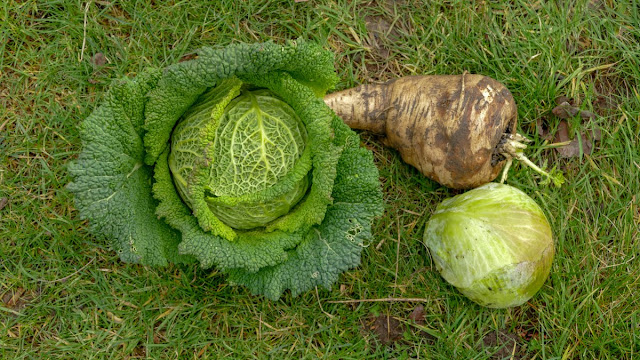Last week the weather was kind again and the sun shone. The temperatures are unseasonally high too. We took full advantage by having a day out a RHS Harlow Carr - I posted photos on last Wednesday's blog - and spending three afternoons on the allotment.
It isn't only us that have been spurred into action by the springlike weather. Martyn checked the seed potatoes that were stored in sacks in the garage and found that they had started to shoot so there was no option other than to set them out in the greenhouse to chit. Left in the dark they would produce long straggly, pale shoots which we don't want. As we may still have some frosty nights, (or even days), they have been covered with layers of fleece.
In our garden greenhouse, our peach tree is totally out of sync. It is usually the last of our greenhouse fruit trees to flower. The apricot is first, then the nectarine and finally the peach. This week we noticed the first flowers on the peach which, means I need to get out my pollinating brush. One of our camellias is also early to the spring party.
The plants on the allotment are making progress too, with many of our fruits bushes and canes sported buds.

We can't really believe how much we have managed to do so early in the year and fully expect the weather to throw us a curved ball and put an end to our plot progress.
One of my main jobs this week was to cut back our autumn fruiting raspberries. Last year's canes have been cut down to the ground. The new shoots are already making an appearance and they will produce this year's fruiting canes. Once the old canes were removed, I tidied the bed by removing the few weeds that had appeared and fertiliser was scattered around the plants.
I posted a video about the types of raspberries that we grow on the allotment on our vlog.
I also tidied up the long border of chives which are also shooting well. I bet the bees can't wait for the flowers - they love them.
I spent a whole afternoon tidying the pear tree bed. This bed has lots of self sown flower seedlings so it was a slow job carefully weeding out the weed seedlings.
Some of the flower seedlings were tiny and so it was a case of getting down and hand - or rather finger - weeding carefully. There are some large clumps of tulips which have bulked up over the years. These will be the first to put on a lovely show. There were lots of cyclamen hederifolia which self seed profusely all over the plot. Other seedling include aquilegia, candytuft and snapdragons.
Still on the subject of flowers, last week I pruned back a vigorous and deadly climbing rose that grows up the back of our compost bins.
Unfortunately the vicious thorns prevent me from tidying around the base of the plant so it always looks messy but when the rose is flowering it looks lovely and is perfumed too so I'll tolerate the thorns.
Several weed seedlings, mainly goosegrass, (or cleavers, or one of the many of the other names that it seems to go by), were popping up in one of the rhubarb beds and so I cleared away as much as I could. I hate goosegrass. Once it starts to grow, it's size and spread increases at an alarming rate. When weeding it out the sticky barbs on the leaves and stems cling to everything and I also end up covered in the little round seeds so to attack it early is always best.
As well as tidying we also fitted in some bed preparation. One of the beds that will host brassicas was limed and last years tomato grow-bags were emptied onto the bed that will become our new strawberry patch.
We are only officially allowed to start fires from one hour before dusk, and so on Thursday we stayed on the plot later than usual so Martyn could burn a large pile of material that we didn't want to compost. This included a very large pile of bindweed and couch grass roots that had been drying out for a few weeks.
The debris quickly burned, leaving very little to show for what really was a huge pile.
Martyn also managed to tidy the plot greenhouse and wash the glass. He also made a start in tidying the garden greenhouse.
He even managed to give the lawn it's first cut which is early for us.
Due to visiting the allotment more regularly, we didn't harvest a great deal, just what we needed for a few days. What we did harvest was more or less a repeat of last week.
We had a two and a three legged parsnip. Although they look strange they provided us with enough for a meal or two.
Of the four parsnips in the photo above, one had grown very chunky. The parsnips are not small, it's the carrots that are oversized.
If you are interested we have posted a few videos taken of last week's plot activity on our vlog here.
This week I am linking to harvest Monday hosted on













































































